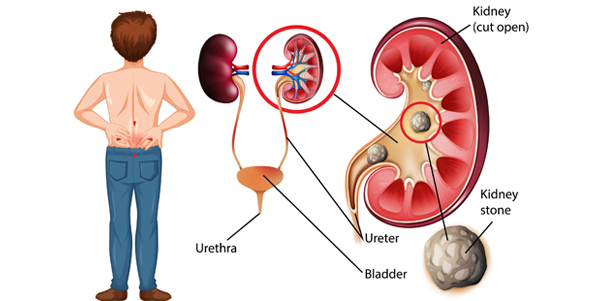The Best
Dr. Sanjeev Narang
Kidney Stones Treatment in Jaipur

Frequently Asked Questions
Kidney Stones – Diagnosis & Treatment by Dr. Sanjeev Narang
What are kidney stones?
Kidney stones are hard deposits of minerals and salts that form in the urinary tract, often in the kidneys, and can move into the ureter or bladder causing pain and urinary symptoms.
What causes kidney stones?
Common factors include dehydration, high salt or oxalate intake, obesity, certain medical conditions (like gout or hyperparathyroidism), family history, and some medicines or supplements.
What symptoms should prompt a checkup?
Severe side/back pain below the ribs, pain radiating to the groin, burning while urinating, blood in urine, frequent urination, nausea/vomiting, or fever and chills (possible infection).
How are kidney stones diagnosed?
Evaluation typically includes urine and blood tests plus imaging (ultrasound or CT scan) to determine stone size, number, and location.
Do all stones need surgery?
No. Many small stones pass with fluids and pain control. Procedures are considered for larger, obstructing, infected, or recurrent stones, or when pain is uncontrolled.
What are the main treatments Dr. Narang uses?
Conservative: Hydration, pain relief, and medical expulsive therapy when appropriate.
Minimally invasive: URS (ureteroscopy) for scope-based removal/laser fragmentation; PCNL (percutaneous nephrolithotomy) for larger/complex kidney stones.
Minimally invasive: URS (ureteroscopy) for scope-based removal/laser fragmentation; PCNL (percutaneous nephrolithotomy) for larger/complex kidney stones.
What is a ureteral stent and will I need one?
A stent is a soft tube placed temporarily to keep urine flowing from the kidney to the bladder if swelling or blockage occurs after URS/PCNL; it’s removed later in clinic.
How long is recovery?
Small stones passing naturally: days to 1–2 weeks. After URS: light activity in 2–5 days. After PCNL: most resume normal activity in 1–3 weeks, depending on overall health and stone burden.
